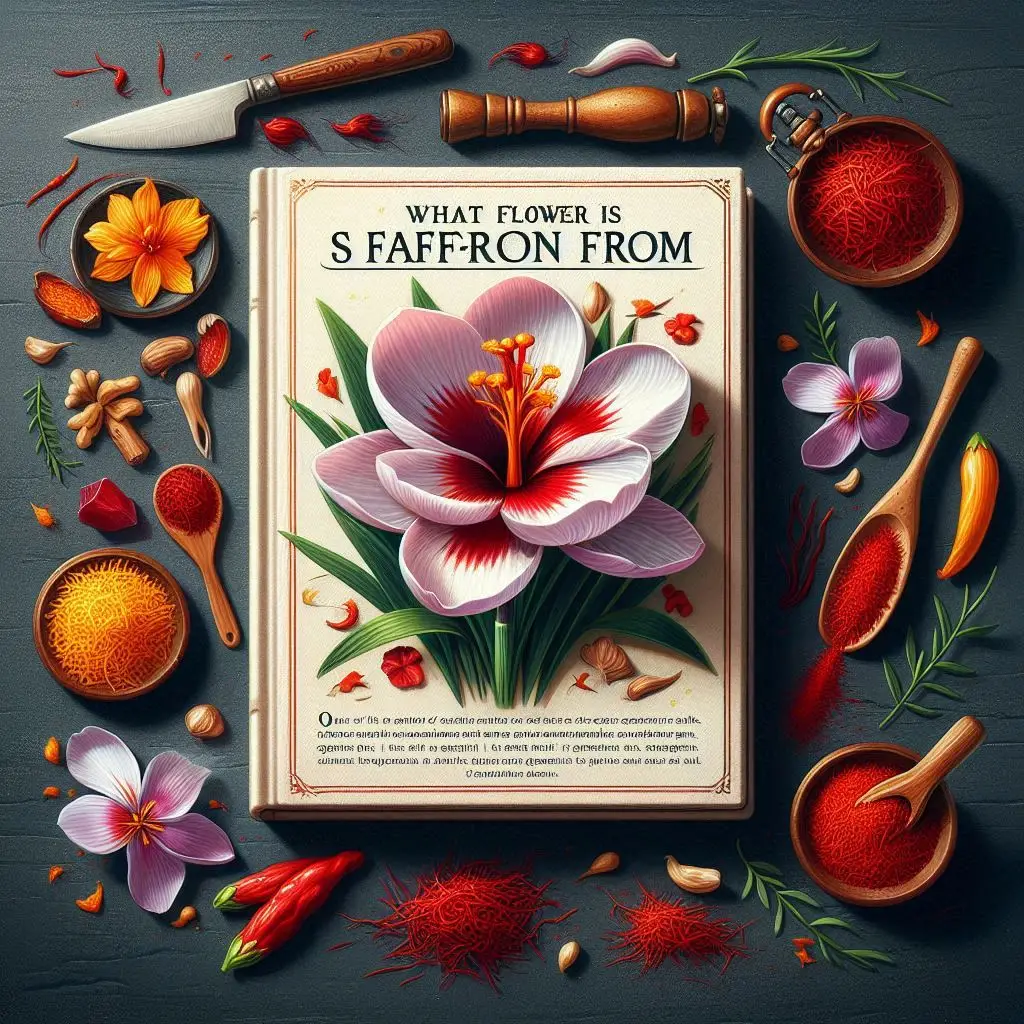
What flower is saffron from
Introduction:
I will talk about what flower is saffron from.
Within the world of culinary pleasures, there is a gem that cooks seek, gourmets adore, and foodies appreciate for its unparalleled taste, scent, and vivid color: saffron. This priceless spice, sometimes known as "red gold," is used extensively in many different cuisines, herbal remedies, and cultural ceremonies across the globe. However, what is saffron precisely, and what flower is it derived from? We set out on a quest to discover the mysteries surrounding this precious spice by delving into the realm of Crocus sativus, the flower that gives us the golden essence of saffron.
Revealing the Blossom:
The tiny perennial plant Crocus sativus, a member of the Iridaceae family, is the foundational species of saffron. This flower, which is native to Southwest Asia, grows best in areas with moderate temperatures and well-drained soil. Fall brings the appearance of Crocus sativus, a grass-like plant with narrow leaves and vivid purple blooms that mark the beginning of a transformation that yields saffron.
The Gathering
Saffron's red stigmas, or the thread-like structures within the flower's petals, are what give it its attraction. Saffron harvesting is an exacting process that takes time and care. Each Crocus sativus flower has its delicate stigmas plucked by expert hands as morning breaks. The procedure is labor-intensive, and each bloom generates just a few exquisite, tiny threads that measure no more than a few millimeters. But this laborious process is what adds to the unmatched value and appeal of saffron.
Growth and Maintenance:
Crocus sativus requires close attention to detail and adherence to precise growth conditions when it is cultivated. For the fragile blooms to be nurtured, ideal soil drainage, sufficient sunshine, and shelter from extreme weather conditions are necessary. Crocus sativus, which is grown mostly in climate-suitable countries like Iran, Spain, and India, needs careful attention throughout its life cycle to produce high-quality saffron.
The Shift:
The red stigmas are dried after harvest in order to maintain their taste, fragrance, and vivid color. Traditionally, this drying method entails placing the stigmas carefully in a place that is well-ventilated and shielded from direct sunlight. The stigmas gradually lose moisture over a few days, which intensifies their taste and gives them the distinctive golden color associated with saffron. This transition from exquisite flower stalks to the highly valued spice that is loved globally captures the essence of Crocus sativus.
Uses in Cooking and Medicine:
The uses of saffron are not limited to food preparation. Saffron, which has a unique taste character, is well-known for giving food and drinks like paella and risotto more depth and complexity. In addition to its culinary abilities, saffron has a long history of medical usage. It is prized for its alleged ability to improve mood, reduce inflammation, and act as an antioxidant. Saffron has long been prized for its medicinal properties and exquisite flavor, both by ancient cultures and contemporary practitioners.
Extension:
The importance of Crocus sativus goes beyond its status as a simple biological specimen; it has great cultural and symbolic significance for people from all walks of life. Saffron has been associated with riches, success, and purity throughout history and has been used in rites, celebrations, and customs. Saffron was utilized in religious gifts and embalming procedures in ancient Egypt as a symbol of the passing from one world to the next. Saffron is utilized in religious events and has a holy meaning in Hindu culture. It represents sacrifice, virtue, and purity.
Furthermore, saffron is a highly sought-after item in the fields of art, literature, and commerce due to its relationship with richness and grandeur. Safflower's golden color has graced many masterpieces by skilled artists, adding a feeling of grandeur and richness that may be seen in everything from the lavish feasts of medieval Europe to the colorful tapestries of the Renaissance. Saffron is known for its exotic charm and sensual appeal, and it has been immortalized in poetry and prose throughout history. Its incorporation into historic trade routes, like the Silk Road, allowed the flow of products, ideas, and civilizations, influencing history and creating links between far-off places.
In addition, the commerce and production of saffron have promoted thriving communities and customs centered on the growing and appreciation of this precious spice. Saffron growing is not only an industry but a way of life in areas where Crocus sativus is native, such as the Kashmir Valley in India and the La Mancha region in Spain. Farmers have been passing down traditional farming methods and customs for generations, strengthening their bond with the land and all of its resources.
Conclusion:
Few ingredients inspire the same feeling of fascination and veneration in the fields of herbal medicine and cuisine as saffron. The humble Crocus sativus, a flower whose exquisite blossoms carry the key to unlocking the golden essence beloved by civilizations past and present, sits at the core of this renowned spice. Saffron is the epitome of the union of human inventiveness and the abundance of nature, from its careful cultivation to its transformational journey from blossom to spice. The flower Crocus sativus is the source of our beautiful saffron, a gem as valuable as gold. Let us take a moment to admire its exquisite beauty while we enjoy the tastes and smells of saffron-infused foods or use its therapeutic powers.
Beyond its natural roots, saffron's tale weaves a complex web of cultural, historical, and commercial importance. The path of Crocus sativus is one of tenacity, inventiveness, and ageless charm, from the fields where it blossoms to the tables where saffron-infused delights are enjoyed. While we are enthralled with the vivid colors and mouthwatering tastes of saffron, let us also consider the heritage of Crocus sativus, a flower whose golden essence has inspired and captivated people for centuries throughout the continents.

